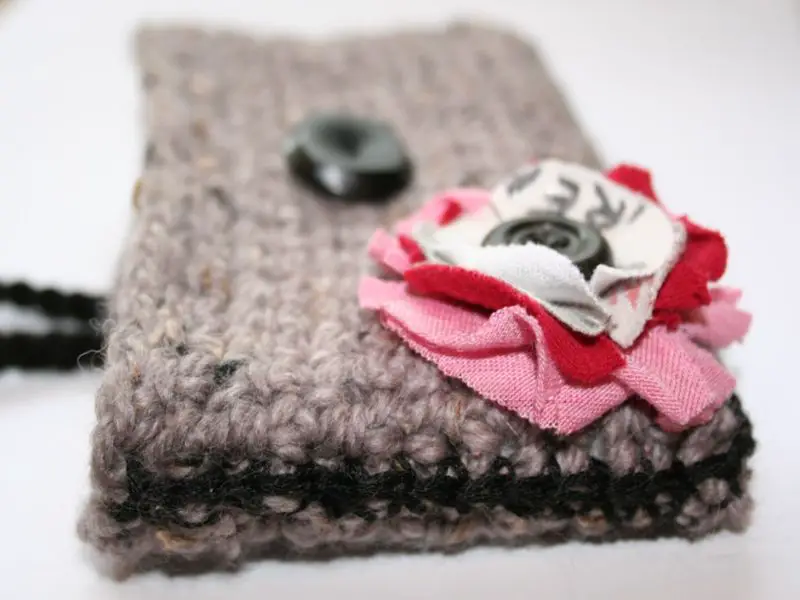
Learning to Crochet (Mistakes Frustrated with Learning to Crochet)
I completely understand. Teaching myself to crochet and answering questions about it, while still learning myself, has taught me that there are some “universal” crochet mistakes. I’ve been there and struggled with these issues, so I absolutely feel your pain.
That’s why I decided to put together this short list of common mistakes that may occur while you’re learning to crochet. Obviously, it’s difficult enough to learn something new, but why should you have to make the same mistakes that people have been making, over and over again, for years?
These mistakes are preventable with a little bit of patience and forethought, so reap the benefits of both my experience and the experience of others, because it may just lessen your frustration. And, remember, you’re never alone in your frustrations – at least not when it comes to crochet!
- Getting a Grip (tension): This is one of the first things you’ll have to learn AND it has the potential to be the most frustrating when beginning crochet. The reason is that it comes with finding the most comfortable “hold” for you. And, being new to crochet, this will, most likely, be the most difficult thing to become comfortable with. There really is no “right” way to do it. Let’s face it, you are trying to manage a crochet piece, working yarn, and a hook all while making stitches. Relax and find your way. If you’re right-handed, you will be holding tension in your left hand. There are many ways to hold it all together, and the only ways that are wrong are the ones that don’t work for you. Try searching some images to see how others hold their tension and you’ll see what I mean. Once you find your way, though, things will get a whole lot easier. I promise.
- The Last Stitch: This one is a biggie! It has to be one of the top crochet mistakes made. I did it as a beginner in crochet, and I still find myself doing it once in a while. If you find your crochet project starting to “shrink” (becoming smaller in width or your side edges becoming uneven), you are probably missing your last stitch in your row(s). An easy way to avoid this is to COUNT YOUR STITCHES. If you’re working in rows, like for a scarf, then your rows will all have the same number of stitches. You can keep it that way by doing something as simple as counting your stitches.
- The Wrong Yarn: This is very common in learning to crochet. People tend to get excited about all the fancy colors and varieties of yarn available online and at your local craft store. That’s understandable. Who doesn’t love a beautiful and fun yarn? But, when you’re learning, you need to be able to SEE your stitches easily, and that’s best achieved using a basic, worsted-weight yarn that’s light in color. Once you get comfortable in recognizing where your stitches are, you can move on to more fun and interesting yarns.
- Your Foundation: There IS a difference between the Foundation Chain and a Foundation Row(s). The Foundation Chain is your long strand of chain stitches that you do BEFORE your first row but is often referred to as the Foundation Row. Your Foundation Chain does not count as a row. Your Foundation Row(s) may
also refer to any of the following: rows in a pattern prior to starting your first row, the combination of your chain and first row, OR a chainless foundation (created by crocheting the chain row and single crochet first row at the same time). I know it sounds confusing, and it is, but as a beginner, just focus on the chain foundation and then start your first row. - Giving Up: This happens quite often. People try crocheting, get frustrated with it, don’t seek out help, and quit before they’ve even really started! When you feel yourself getting too frustrated, put the crochet hook down and just walk away. Come back to it later, or the following day, but only practice for 10-15 minutes at a time. Sometimes, crocheting (or learning anything new) is best done in small doses. It’s more manageable and will, eventually, become more enjoyable. Be patient with yourself. You don’t know what you’re doing until you know what you’re doing.
The bottom line is that, just like anything else, learning to crochet is a process. It will take a little time and a lot of patience, but the time you invest into it will, in turn, return your own success. So, grab your hook and yarn, and let’s get crocheting! If you have any questions about some of the basics of crochet, please ask them in the comment section and I’ll try to help out in any way I can. Until then…
Happy Crocheting!
Warmly, Rachel